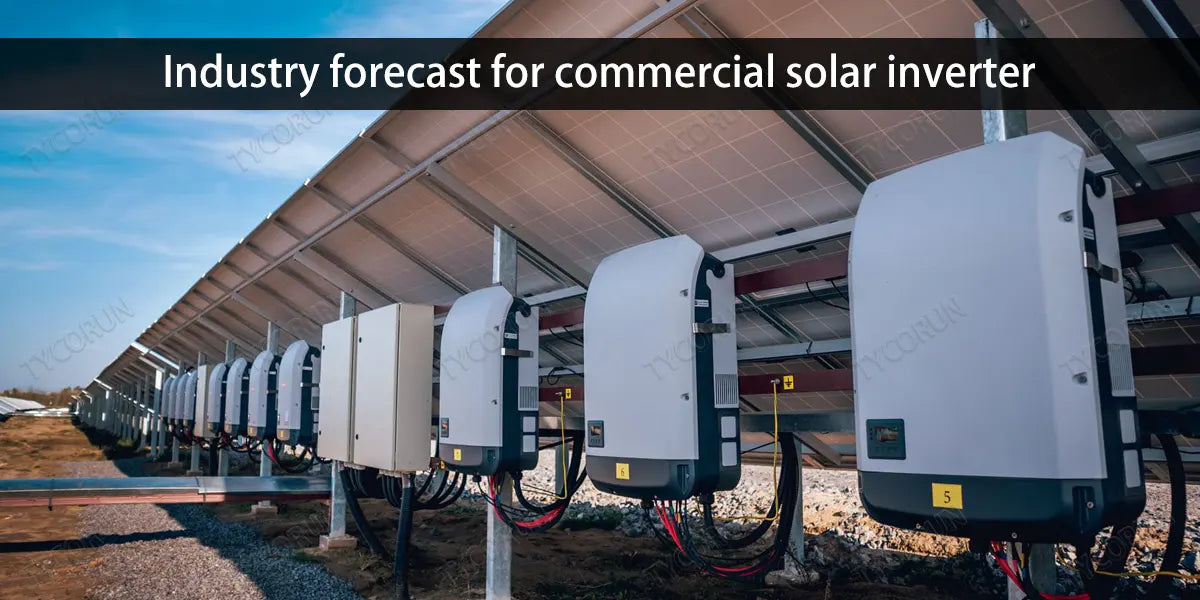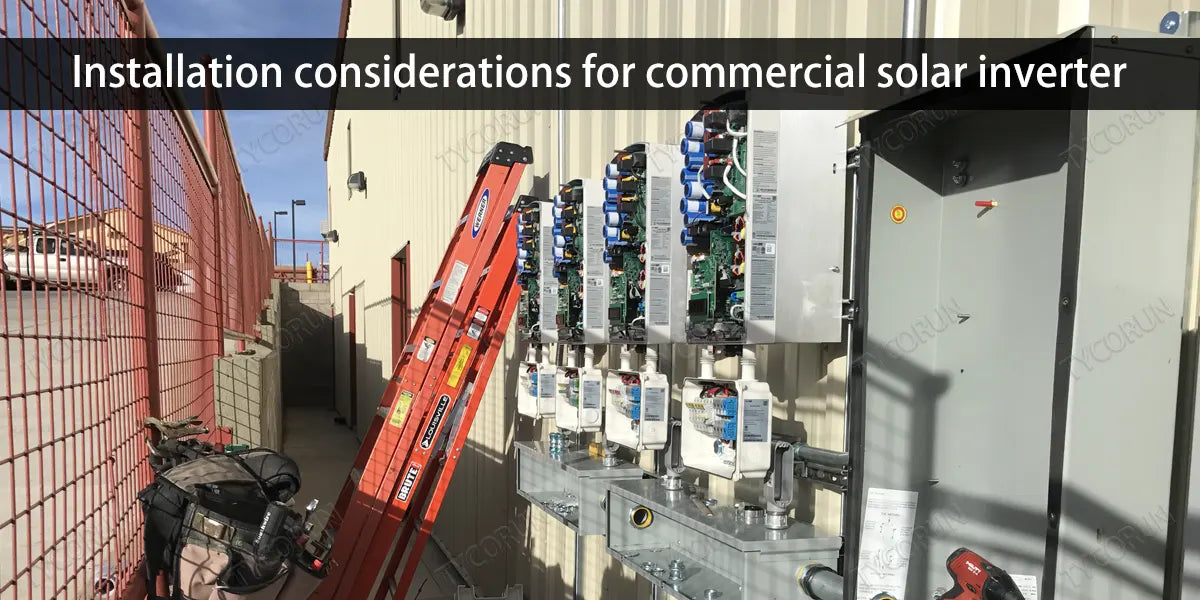
The commercial solar inverter is a device designed to convert the DC power generated by solar panels into AC power and combine it with an energy storage system for energy management and optimization.
Main content:
In commercial and industrial environments, it can be used for power storage, load scheduling, peak and valley tariff arbitrage, improving grid stability, and as a backup power source.
Concepts and principles of commercial solar inverter
- The commercial solar inverter integrates the inverter of the photovoltaic power generation system and the charge/discharge control function of the energy storage system. When the solar energy is sufficient, it not only drives the loads, but also stores the excess power in the battery; When the solar energy is insufficient or the power grid is down, the stored power is released from the storage device for use by the customer.
- The commercial solar inverter is usually equipped with bi-directional conversion capability, i.e., it can convert AC power into DC power to be deposited into the battery in charging mode, and invert the DC power in the battery into AC power to meet the requirements of grid quality in discharging mode.
The role of commercial solar inverter
- Increase self-sufficiency and reduce dependence on the public grid.
- Smoothing the volatility of photovoltaic power generation and improving the stability of power supply.
- Utilizing the difference between peak and valley electricity prices to reduce the cost of electricity consumption for enterprises.
- Participate in demand response services to assist in the stable operation of the power grid.
- Provide emergency power protection in case of grid failure.

Prices of commercial solar inverter
Prices for commercial solar inverters vary by brand, model, power rating, feature configuration, technical complexity, and other factors, and usually have a wide price range. The following information may provide a general reference:
Industry forecast for commercial solar inverter
The following are some of the key trends in the commercial solar inverter market in the coming years:
- 1. Market demand growth: With the transformation of the global energy structure to low-carbon and cleaner, governments are increasing their support for renewable energy, as well as the development of distributed energy systems and smart grid technology. Commercial and industrial users for optimizing the efficiency of energy use, to achieve the increasing demand for power cost control, which will drive the deployment of photovoltaic energy storage system, which in turn boosts the market demand for energy storage inverters.
- 2. technological advances and cost reductions: advances in energy storage technology makes the battery costs continue to decline, while the inverter efficiency, service life extension, these will promote the commercial and industrial PV energy storage projects to improve the economy, and further stimulate the expansion of market capacity.
- 3. Policy-driven: many countries and regions have introduced policies conducive to the application of energy storage, such as subsidies, tax incentives, etc., in order to support the development of clean energy grid-connected and independently operated projects, which will also accelerate the popularity of storage inverters in the commercial and industrial sectors.
- 4. Application scenario expansion: In addition to the basic functions of peak shaving and valley filling and standby power, energy storage inverters also play an increasingly important role in virtual power plants, microgrids, demand response, etc. Diversified application scenarios help to broaden its market space.
- 5. Layout and competition pattern of head enterprises: Leading enterprises in the industry will continue to invest in R&D, launch more efficient and smarter products and services, and lead the whole market forward.

Installation requirements for commercial solar inverter
As the core equipment of the power station, the installation of commercial solar inverter is not done properly, which will directly affect the normal power generation, and even produce safety hazards. So, what are the places to pay attention to the installation of commercial solar inverter?
- Ensure that there is no strong electromagnetic interference from other electronic or electrical equipment at the installation location.
- During the operation of commercial solar inverter, the humidity of the chassis and heat sink will be relatively high, please do not install the commercial solar inverter in a position that is easy to touch.
- Commercial solar inverter should be installed in a well-ventilated environment to ensure good heat dissipation.
- It is recommended to choose a sheltered installation location or build an awning.
- The ambient temperature of the installation should be -30-60°C and the site should be clean.
- The installation location should be on a fixed and solid surface, such as a wall, metal bracket, etc. The inverter should be mounted on a reliable surface.
- The installation location should ensure that the inverter is reliably grounded, and that the grounding metal conductor material is the same as the inverter's reserved grounding metal material.
Installation considerations for commercial solar inverter
- Before commercial solar inverter installation you should first check that the inverter has not been damaged during transportation.
- Always cover the PV panels with impervious material or disconnect the DC side circuit breaker before making electrical connections. Exposed to sunlight, the PV array will generate dangerous voltages.
- All installation operations must be performed and only by specialized technicians.
- The cables used in a PV power system must be securely connected, well insulated, and of the proper gauge.
- All electrical installations must meet local and national electrical codes.

Tycorun company mainly focuses on the user-side inverter and lithium energy storage battery market, mainly selling 12v inverter, its inverter waveform is pure sine wave, specific specifications have 500w, 1000w inverter, 3000w inverter. It can be applied in different scenarios, such as home energy storage backup, inverter for van, inverter for office use.
Related posts: global top 10 best solar inverter brands, top 10 solar inverters in Australia, top 10 best power inverter companies in Europe, top 10 best inverter brands in India